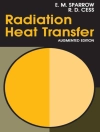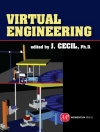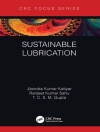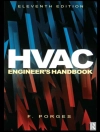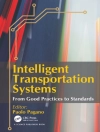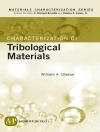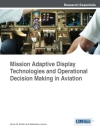UAS Integration into Civil Airspace
Explores current Unmanned Air Systems policies with a view to developing a common airspace access and integration strategy
UAS Integration into Civil Airspace: Policy, Regulations and Strategy examines the current state of Unmanned Aerial Systems (UAS) airspace access and integration around the world, focusing on the efforts that have produced a regulatory response to the demand for access. This analysis discusses the proposed architectures for a common strategic and analytical thread that may serve as templates for the entire community, as well as for regulators and policymakers who must balance the needs and demands of UAS users with the general public’s right to safe skies and privacy. An understanding of the market forces and business cases that are fuelling the development of the technology is also covered with a focus on the economics of the industry.
The book presents a strategy for airspace access and integration that will facilitate humanitarian, environmental, social and security uses of unmanned aircraft systems on a global scale.
Key features:
* Discusses existing and evolving policies and regulations from nations around the world for operating Unmanned Aerial Systems (UAS) in civil airspace
* Examines the current status of technological developments such as UTM and U-space and explores the technological potential in the years to come
* Presents a comprehensive airspace integration strategy that balances the many conflicting interests in the UAS world, with due regard for safety, utility and affordability
UAS Integration into Civil Airspace: Policy, Regulations and Strategy is essential reading for all professionals involved in UAS industry, as well as students in mechanical engineering and law.
Inhoudsopgave
Preface xi
Aerospace Series Preface xvii
Acknowledgements xix
List of Acronyms and Abbreviations xxi
1 Background 1
Introduction 1
Setting the Stage for Integration of Remotely Piloted Aircraft into Non-segregated Airspace 2
The Law of the Sea and the Law of the Air 2
A Brief History of Aviation Regulations 3
International Civil Aviation Regulations 4
The Chicago Convention and the International Civil Aviation Organization 6
Conclusion 9
References 9
2 UAS Airspace Integration in the European Union 11
Regulations, Opinions, Decisions 11
Implementing Organizations 39
Eurocontrol 60
Conclusion 66
References 66
3 ICAO 69
ICAO Model UAS Regulations 69
Advisory Circulars 70
DRAFT Canada AC 922-001, RPAS Safety Assurance 71
UTM Guidance 71
ICAO RPAS Concept of Operations 75
ICAO U-AID Guidance 80
The ICAO UAS Toolkit 81
RPAS Manual (Doc.) 10019 1st Edition 82
Conclusion 86
References 86
4 UAS Airspace Integration in the United States 87
The FAA Modernization and Reform Act of 2012 (Hereafter FMRA), Public Law 112-95, Title III – Safety, Subtitle B – Unmanned Aircraft Systems 88
The FAA Extension, Safety, and Security Act of 2016 Title II, Subtitle B-UAS Safety (Pub. L. 114-190) 91
The FAA Reauthorization Act of 2018 (Pub. L. 115-254) 92
The Response from the FAA and NASA 96
Status of UTM Today 104
UTM Vision 104
Participation 109
Performance Authorizations 109
Airspace Authorization 110
Recent Developments in UAM/AAM 110
Conclusion 111
References 111
5 Global Airspace Integration Activities 113
Australia 113
Brazil 115
Canada 116
China 117
France 119
Germany 120
Ireland 121
Italy 122
Japan 123
Mexico 124
Netherlands 124
New Zealand 125
Norway 125
Singapore 126
South Africa 127
Sweden 128
United Kingdom 129
Conclusion 130
References 131
6 The Role of Standards 133
Conclusion 141
References 142
7 The Technology 143
Conclusion 150
References 152
8 Cybersecurity and Cyber Resilience 153
Describing the Threat 155
ICAO 157
IATF 157
Global Resilient Aviation Network Concept of Operations – Trust Framework 162
ICAO Council and Assembly Documents 166
Declaration on Cybersecurity in Civil Aviation (Dubai, 2017) 166
Conclusion 172
References 173
Index 175
Over de auteur
Douglas M. Marshall, J.D., is the owner of True North Consulting LLC, a UAS support and service organization founded in 2007. He has served as an Adjunct Professor of Law, De Paul University College of Law, where he developed and delivered the first drone law course in an American law school. Previously, he was a division manager, UAS Regulations & Standards Development at the Physical Science Laboratory, New Mexico State University, and Professor of Aviation at the University of North Dakota. He is the co-editor of two books related to aviation, and is the author of numerous published articles on aviation law, regulations, and remotely piloted aircraft.


